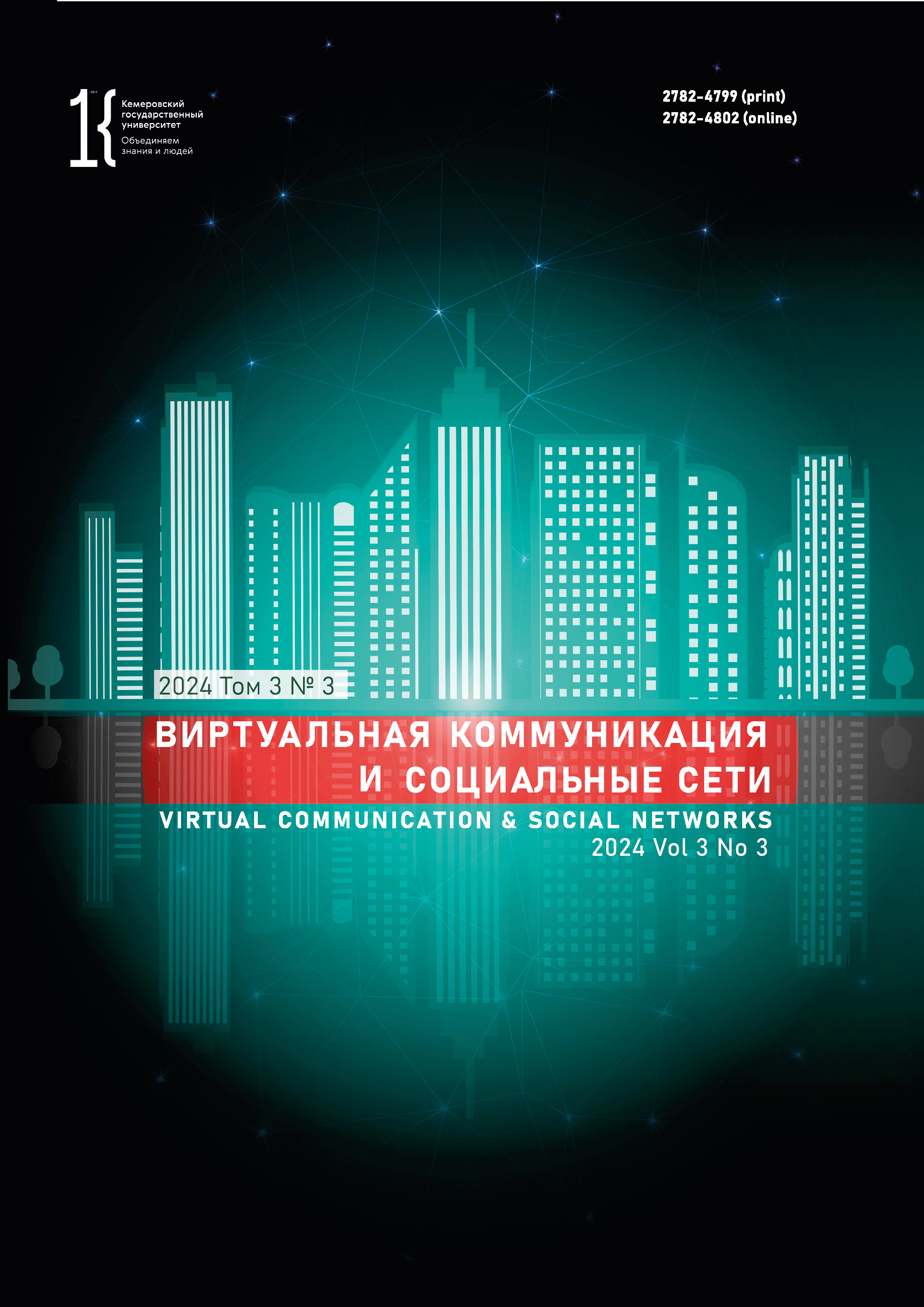Moscow, Russian Federation
VAK Russia 5.9.8
The article introduces the matrix of cognitive filters as a research method that makes it possible to model the process of inferring the meaning of lingua-createmes in multimodal online discourse. Multimodal linguistic systems are based on a complex interaction of multimodal components. These components combine with basic cognitive mechanisms in decoding various complex phenomena in digital Internet discourse. The research revealed a classification of key cognitive mechanisms that generate the meaning of creative multimodal elements: banner blindness, evaluative categorization, conceptualization, (de)compression of information, profiling, conceptual metaphor, conceptual metaphthonymy, and conceptual integration. The research material involved 18,000 monomodal verbal and multimodal lingua-createmes selected by continuous sampling from English-language Internet resources, as well as visual and verbal corpora. The method proved effective in modelling the general cognitive resonance of lingua-createmes and predicting cognitive resonance / dissonance (positive or negative) in communication. The practical lingua-cognitive experiment involved 335 English-speaking respondents from eleven countries. They were asked to use the matrix of cognitive filters to perform a step-by-step decoding of several creative multimodal elements. The method proved highly effective for detecting cognitive resonance or mental tension, i.e., positive or negative cognitive dissonance. The method demonstrated good prospects for obtaining additional data on reactions to lingua-creative discursive elements.
matrix of cognitive filters, cognitive mechanism, lingua-createme, categorization, metaphor, metaphtonymy, integration, banner blindness
1. Kalinin O. I. The metaphor power: Aspect of perception. Cognitive studies of language, 2023, (2): 102–108. (In Russ.) https://elibrary.ru/dhezcr
2. Taymour M. P. The matrix of cognitive filters as a tool for the analysis of linguocreatems in modern English discourse. Discourse and language in the era of big data: Variability, creativity, and experiment, ed. Zykova I. V. Moscow: R.Valent, 2023, 328–336. (In Russ.) https://elibrary.ru/bxclfa
3. Black M. Models and Metaphors. Ithaca, NY: Cornell University Press, 1962, 276.
4. Crystal D. Language and the Internet. Cambridge: Cambridge University Press, 2006, 304.
5. Boldyrev N. N. The interpretive dominant in the cognitive theory of language. EpSBS European Proceedings of Social AND Behavioural Sciences: Proc. Philological Readings, Orenburg, 19–20 Sep 2019. Orenburg: OSU, 2020. http://dx.doi.org/10.15405/epsbs.2020.04.02.1
6. Fauconnier G. Mental Spaces. Cambridge: MIT Press, 1985, 258.
7. Fauconnier G., Turner M. B. Conceptual integration networks. Cognitive science, 1998, 22(2): 133–187. http://dx.doi.org/10.1207/s15516709cog2202_1
8. Festinger L. A theory of cognitive dissonance. Stanford: Stanford University Press, 1957, 291.
9. Forceville C. Non-verbal and multimodal metaphor in a cognitivist framework: Agendas for research. Multimodal Metaphor, eds. Forceville C., Urios-Aparisi E. Berlin; NY: Mouton de Gruyter, 2009, 19–42. http://dx.doi.org/10.1515/9783110197761.5.379
10. Forceville C. Pictorial and multimodal metaphor in commercials. Go Figure! New Directions in Advertising Rhetoric, eds. McQuarrie E. F., Phillips B. J. NY: Routledge, 2008, 272–310.
11. Gapanyuk Yu. E., Terekhov V. I., Ivlev V. Y., Kaganov Yu. T., Karabulatova I. S., Oseledchik M. B., Semenov D. V. Principles of creating hybrid intelligent information systems based on the granular-metagraph approach. Biologically Inspired Cognitive Architectures 2023: Proc. of the 14th Annual Meeting of the BICA Society, eds. Samsonovich A. V., Liu T. Cham: Springer Nature, 2024, 356–366. https://doi.org/10.1007/978-3-031-50381-8_37
12. Golubkova E. E., Taymour M. P. Mixed multimodal metaphors in advertising in English. European Proceedings of Social and Behavioural Sciences: Proc. Intern. Conf., Novosibirsk & Irkutsk, 1–3 Apr 2021. EPSPBS, 2021, 622–629. https://doi.org/10.15405/epsbs.2021.12.76
13. Goosens L. Metaphtonymy: The interaction of metaphor and metonymy in expressions for linguistic action. Cognitive Linguistics, 1990, 1(3): 323–342. https://doi.org/10.1515/cogl.1990.1.3.323
14. Grady J. E. Primary metaphors as inputs to conceptual integration. Journal of Pragmatics, 2005, 37(10): 1595–1614. https://doi.org/10.1016/j.pragma.2004.03.012
15. Gurevich L. S. Expressive speech acts in political discourse: An integrative approach perspective. Journal of Advanced Research in Social Sciences, 2022, 5(2): 18–35. https://doi.org/10.33422/jarss.v5i2.783
16. Karabulatova I. S., Lagutkina M. D., Borodina N. V., Streltsova M. A., Bakhus A. O. Formation of ethnosocial identity in the matrix of media discourse. Amazonia Investiga, 2021, 10(43): 234–247.
17. Lakoff G., Johnson M. Metaphors we live by. Chicago: University of Chicago Press, 1980, 276.
18. Taymour M. P. Linguistic creativity in modern multimodal microtexts in English. Moscow: RuScience, 2023, pt. 1, 128. https://elibrary.ru/wkjcrb
19. Taymour M. P. Linguistic creativity: Cognitive dissonance vs cognitive resonance. Linguistic Existence of Human Being and Ethnos: Proc. Conf., Moscow, 11–14 May 2022. Moscow: INION RAS, 2022, 135–140. https://elibrary.ru/dptksp
20. Zhang L., Karabulatova I., Nurmukhametov A., Lagutkina M. Association strategies of speech behavior of communicators in coding discourse: An interdisciplinary approach towards understanding the role of cognitive and linguistic processes in communication. Journal of Psycholinguistic Research, 2023, 52: 1571–1587. https://doi.org/10.1007/s10936-023-09966-z















